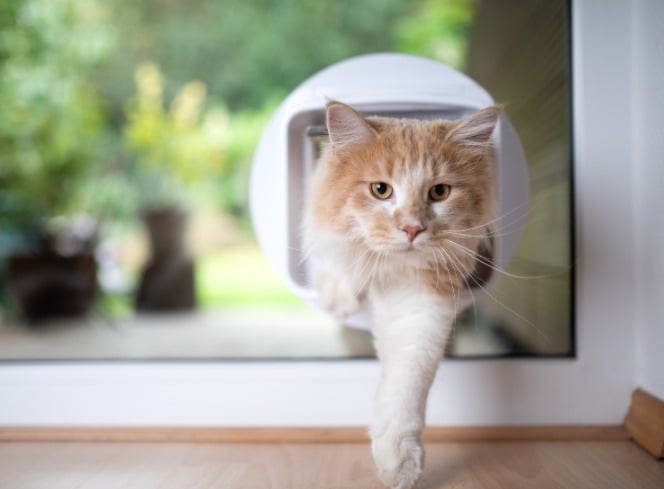Catnip, scientifically known as Nepeta cataria, is a herbaceous plant that has intrigued cat owners and enthusiasts for centuries. Its ability to induce peculiar behaviours in cats has made it a popular topic of discussion among feline aficionados. In this expert guide, we will delve into the world of catnip, exploring what it does to cats, why cats are drawn to it, and whether it's safe for our furry friends. Additionally, we will address questions about catnip's effects on kittens, its role as a recreational "drug," and the differences between catnip and catmint.
What Does Catnip Do To Cats?
Catnip contains a compound called nepetalactone, which is primarily responsible for its effects on cats. When cats come into contact with catnip, whether by sniffing, licking, or chewing it, the nepetalactone binds to receptors in their nasal tissue, stimulating sensory neurons. This stimulation triggers a cascade of reactions in the cat's brain, leading to a range of distinctive behaviours.

Why Do Cats Like Catnip?
- Sensory Stimulation: The nepetalactone in catnip mimics feline pheromones, creating a euphoric and stimulating response in cats. They may rub their face, roll around, and become more playful.
- Stress Relief: Catnip can have a calming effect on some cats, helping them relax and reduce stress or anxiety.
- Natural Instincts: In the wild, cats use scent-marking as a way to establish territory. Rolling in catnip can be seen as a way for domestic cats to mark their territory with this enticing scent.
- Curiosity: Cats are naturally curious creatures, and catnip provides a novel and intriguing experience for them.
Can Cats Eat Catnip?
While it's safe for cats to ingest small amounts of catnip, it's more common for them to react to the scent. Ingesting larger quantities may lead to mild gastrointestinal upset, so it's best to use catnip as a scent stimulant rather than a dietary supplement.

Can Kittens Have Catnip?
Kittens typically do not react to catnip until they are around 3 to 6 months old. Sensitivity to catnip is hereditary, so some kittens may never show a response. It's advisable to introduce catnip cautiously to kittens and monitor their reactions.
Is Catnip a Drug?
Catnip is not a drug in the traditional sense, but it can be considered a natural stimulant for cats. It's non-addictive, and cats do not build up a tolerance to it. The effects are short-lived and usually wear off after about 10-15 minutes, after which cats may lose interest until later.

Is Catnip Good for Cats?
Catnip can provide various benefits to cats, such as mental stimulation, stress relief, and exercise. However, it's essential to use catnip in moderation to prevent overstimulation or indifference. Some cats may react negatively to catnip, so it's not a one-size-fits-all solution.
Catmint vs. Catnip
Catmint (Nepeta mussinii) and catnip (Nepeta cataria) are closely related plants, but they may affect cats differently. While catnip is the most potent for eliciting feline responses, some cats also react to catmint. It's worth experimenting to see which your cat prefers.
How Does Catnip Work?
In summary, catnip's active compound, nepetalactone, interacts with a cat's sensory neurons, leading to a range of behaviours. These behaviours are natural responses, and the effects of catnip are generally safe for most cats.
Our Top Catnip Toys
If you're looking to enhance your cat's playtime with catnip-infused toys, we have a wide range of high-quality catnip toys designed to captivate and entertain your feline companion. Here are our top three catnip toys:
-
KONG Catnip Infuser: The KONG Catnip Infuser is a must-have for cats who adore catnip. This ingenious toy allows you to add fresh catnip to keep your feline friend engaged and excited. Its interactive design provides mental stimulation as your cat works to extract the fragrant catnip.
-
KONG Cat Puzzlements Pie: The KONG Cat Puzzlements Pie is a delightful puzzle toy that combines play and mental stimulation. It features hidden pockets to hold catnip or treats, encouraging your cat to explore and interact. With its savoury scent and engaging design, this toy is perfect for curious cats.
-
P.L.A.Y Sushi Cat Toys: Treat your cat to a sushi feast with the P.L.A.Y Sushi Cat Toys. This pack includes three adorable sushi-themed toys filled with premium catnip. Each toy is crafted with attention to detail, making them perfect for batting, chasing, and cuddling. Your cat will have a blast with these sushi-inspired playthings.
The fascination with catnip and its effects on cats has long intrigued pet owners. Understanding why cats like catnip, how it works, and its potential benefits can help us provide enriching experiences for our feline companions. Remember to use catnip in moderation and be attentive to your cat's reactions to ensure a safe and enjoyable experience for your furry friend. Whether in the form of catnip toys or the plant itself, catnip can be a valuable addition to your cat's playtime repertoire.
































































































